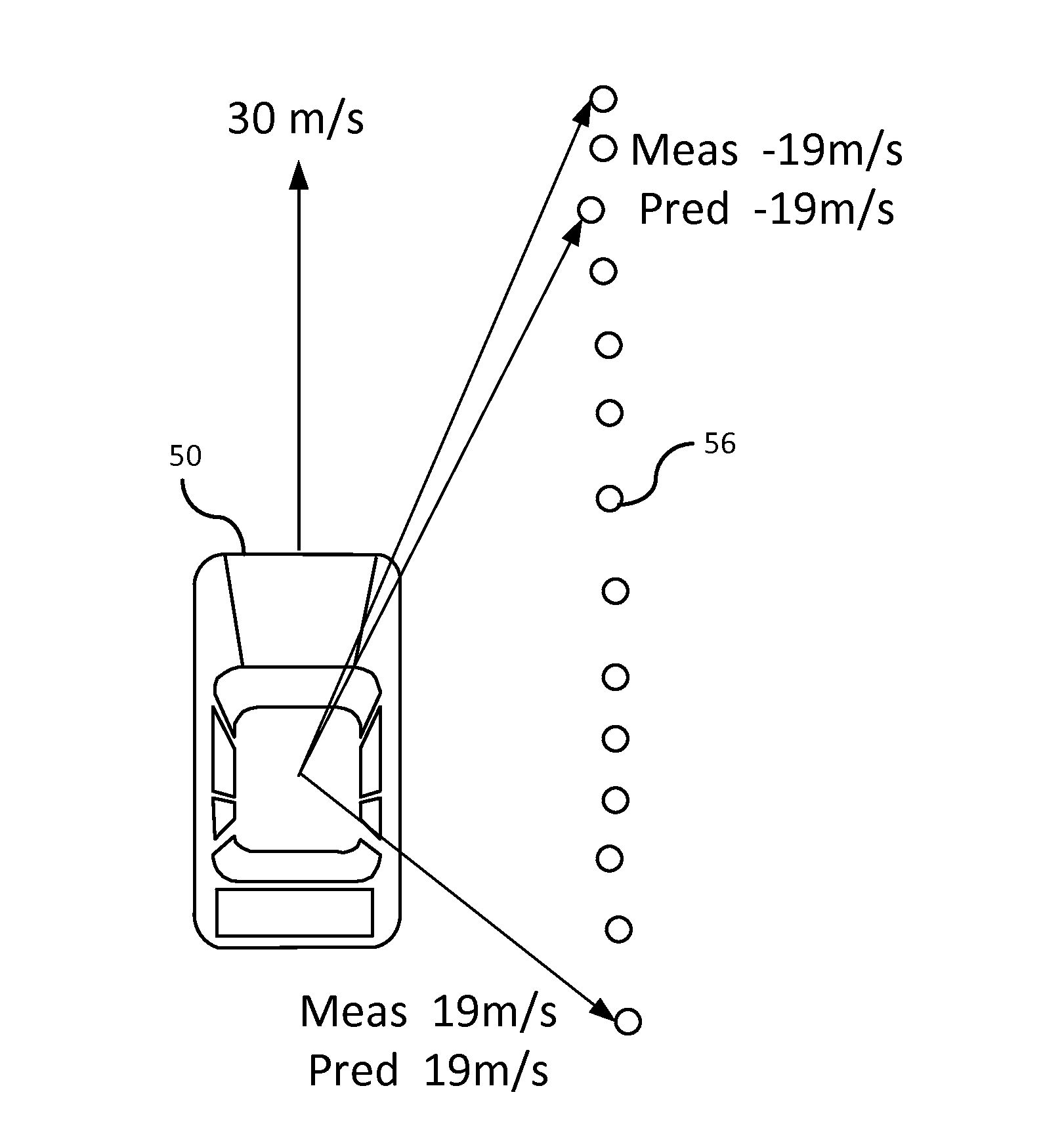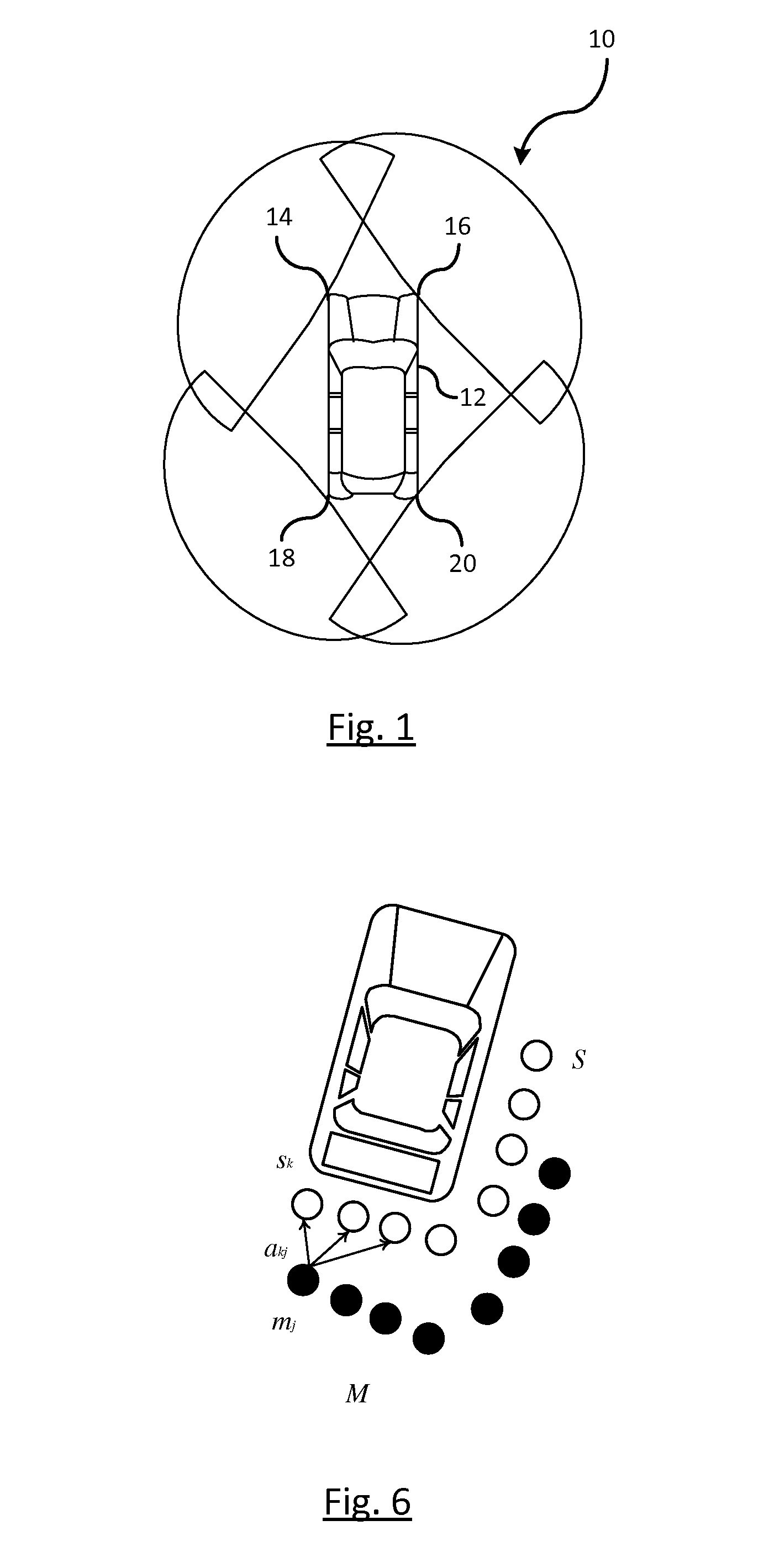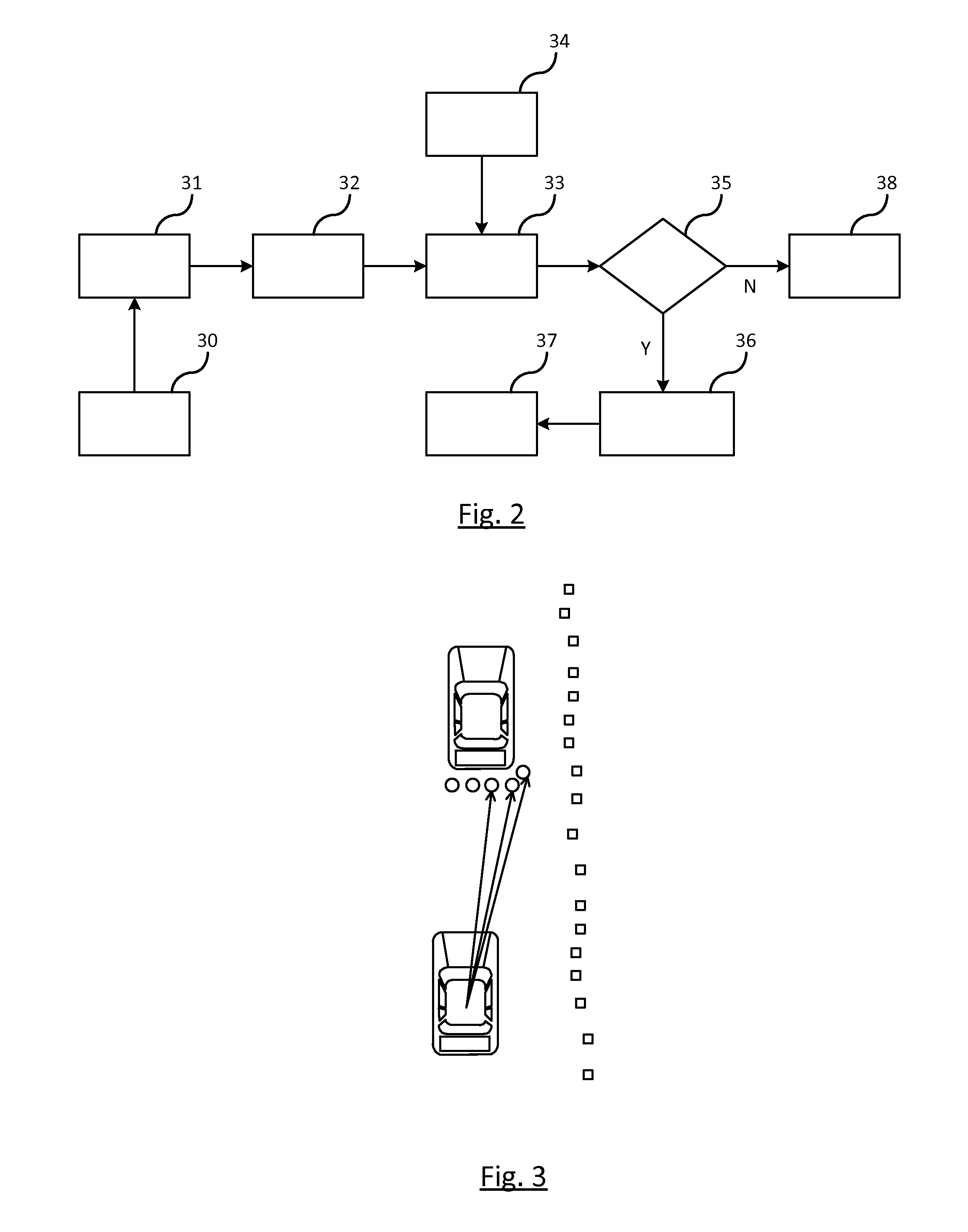Object fusion system of multiple radar imaging sensors
a technology of object fusion and radar imaging, applied in the direction of reradiation, measurement devices, instruments, etc., can solve the problems of difficult assessment of close-by-targets, sparse inputs from radars, etc., and achieve the effect of improving the tracking position of objects
- Summary
- Abstract
- Description
- Claims
- Application Information
AI Technical Summary
Benefits of technology
Problems solved by technology
Method used
Image
Examples
Embodiment Construction
[0017]FIG. 1 illustrates a vehicle surround sensing system 10 for detecting objects 360 degrees around a vehicle 12. The system 10 includes a first sensing device 14, a second sensing device 16, a third sensing device 18, and a fourth sensing device 20. Each of the sensors detects objects within a sensed region surrounding the vehicle 12. The data from each of the sensors are fused to cooperatively track objects exterior of the vehicle 12. It should be understood that the number of sensors as shown in FIG. 1 is exemplary, and either one or a plurality of sensors may be used without deviating from the scope of the invention.
[0018]Short range radar sensors are traditionally narrow band and have issues when sensing objects that represent a dense scene or close-by extended objects to lack of range. For example, for a host vehicle driving down a highway with a remote vehicle on one side of the host vehicle and a guard rail on the other side of the vehicle, such objects are difficult to d...
PUM
 Login to View More
Login to View More Abstract
Description
Claims
Application Information
 Login to View More
Login to View More - R&D
- Intellectual Property
- Life Sciences
- Materials
- Tech Scout
- Unparalleled Data Quality
- Higher Quality Content
- 60% Fewer Hallucinations
Browse by: Latest US Patents, China's latest patents, Technical Efficacy Thesaurus, Application Domain, Technology Topic, Popular Technical Reports.
© 2025 PatSnap. All rights reserved.Legal|Privacy policy|Modern Slavery Act Transparency Statement|Sitemap|About US| Contact US: help@patsnap.com



